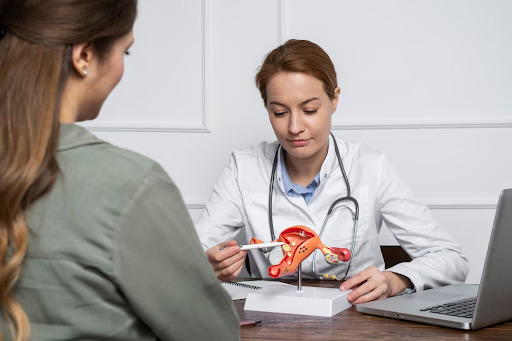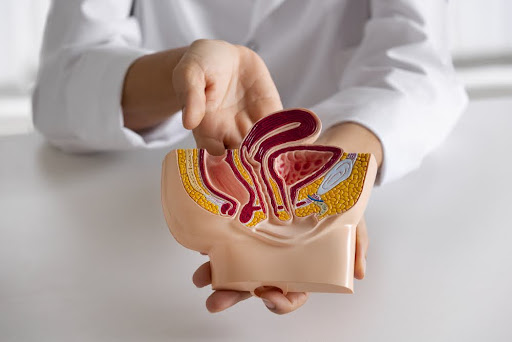
Incisional Hernia Surgery in Mumbai
- Home
- Incisional Hernia Surgery in Mumbai
Incisional Hernia Surgery in Mumbai
The word “hernia” is derived from the Latin word for “rupture”. It is defined as an abnormal protrusion of an organ through a defect in its surrounding walls. It typically occurs due to weakness in the wall.
Incisional/Ventral hernia
Incisional or ventral hernias occur from incisions of previous surgery. These hernias may occur as a result of excessive tension and inadequate healing of the incision of previous surgery. Often this is associated with infection in the primary surgical site. These hernias are complicated and difficult to treat. They tend to become bigger over time and may lead to pain, intestinal obstruction and strangulation in future.
Obesity, diabetes, COPD etc are risk factors for developing an incisional hernia. Chemotherapeutic agents, use of corticosteroids, and surgical site infection contribute to poor wound healing and in turn lead to development of an incisional/ventral hernia.
Diagnosis of Incisional/Ventral hernia
A protruding swelling through a previous surgical scar is a sign of hernia especially if this swelling, increases in size on straining (coughing, walking etc) and decreases in size on lying down. Sometimes, this swelling may become painful and it may not be possible to push it back into the abdomen. This means that the hernia has become irreducible and one must consult the surgeon immediately. If the swelling has become painful, red, tender and irreducible then it is a sign of strangulation. Strangulated hernia is a surgical emergency and one must visit the hospital without any delay.
Diagnosis of a ventral/incisional hernia is mainly done on clinical examination. An ultrasound of the abdomen may be performed to confirm the size of the defect and determine nature of the contents of the hernia. This helps in deciding the type of incisional hernia repair surgery.
Incisional hernia repair surgery
Plan of incisional hernia repair surgery depends on the size of the hernial defect.
Nowadays, laparoscopic incisional hernia repair surgery is recommended wherever feasible. Laparoscopic ventral incisional hernia repair entails 3 to 4 tiny sub-centimeter cuts on the abdomen through which the entire surgery is performed. A diagnostic laparoscopy must be performed in all cases of incisional hernia repair surgery to check for intra-abdominal adhesions. Laparoscopy gives a better view and orientation and helps in taking down all adhesions and inspecting the other sites in the abdomen for any un-identified hernia defects. Best candidates for laparoscopic incisional hernia repair surgery are patients with small or moderate size hernias in which the contents are easily reducible. The defect must always be closed in laparoscopic incisional hernia repair and a synthetic mesh must be applied for re-inforcement. Laparoscopic incisional hernia repair must not be considered in patients with history of multiple previous surgeries, abdominal wall infection, emergency setting, intestinal obstruction etc. Obesity per say is not a contra-indication for laparoscopic ventral incisional hernia repair surgery.
Laparoscopic ventral incisional hernia repair surgery may not be a feasible option in larger defects or in cases where the defects are lower down such as those in the lumbar region or near the pubic symphysis. Defects very close to the ribs also may not be amenable to a laparoscopic ventral incisional hernia repair. In such cases, open hernia repair surgery is recommended. In very complex cases an abdominal wall reconstruction may be required.
At times during the primary surgery due to swelling on the intestine, infection, packing etc, closure may not have been possible. This may lead to loss of abdominal wall domain and musculature. In such cases incisional hernia repair surgery has to be considered very carefully as over-enthusiastic attempts at repair may lead to increased abdominal pressure, respiratory problems, compartment syndrome etc.
Cost of laparoscopic ventral incisional hernia repair surgery
Laparoscopic incisional hernia surgery cost depends on a lot of factors. Incisional hernia repair surgery cost depends on the clinical profile of the patient, type and size of hernia mesh used in surgery, duration of surgery, class of room selected etc. Cost of incisional hernia repair surgery will also differ based on whether an open or laparoscopic repair is performed. Cost of laparoscopic incisional hernia repair surgery is higher than open repair due to the higher cost of synthetic mesh that may be used. Cost of incisional hernia repair surgery is usually covered by health insurance.
Incisional/ventral hernia repair surgery FAQs
-
Can an incisional hernia be treated without surgery?
Incisional hernias cannot be treated conservatively. There is no medical treatment for hernia. Surgery may be deferred temporarily for reducible hernias but will be needed eventually. The doctor may also decide to defer surgery in patients who are medically unfit to undergo surgery. If the hernia is irreducible or strangulated then an emergency surgery is recommended.
-
How do I prepare for hernia surgery?
After you have consulted the doctor, you will need to get certain investigations done. Once your investigations have been seen by the doctor and you are medically fit to undergo surgery, a date will be fixed for surgery. If you are on any blood thinner medications, they will need to be stopped atleast 5 days before the surgery. You can get admitted either one evening before or on the morning of surgery based on doctor’s instructions.
-
Will I get a lot of pain after surgery?
Degree of pain is much less after laparoscopic surgery as compared to open surgery. You will be covered with round the clock analgesics during the hospital stay.
-
When will I get discharged?
Most often patients get discharged a couple of days after their surgery. However, it depends on their clinical profile and condition.
-
What are the precautions to be taken after incisional/ventral hernia repair surgery?
After this surgery, it is advisable to wear an abdominal binder for 3 months. It is also advised not lift any heavy weights and perform any strenuous activities.
-
When can I get back to work after incisional hernia surgery?
You can get back to work within a week after surgery. However, it may vary depending on your clinical condition. Some patients may get back even earlier than a week after surgery and rarely some may take a bit longer.
-
Can the hernia recur even after surgery?
Rarely a hernia may recur even after surgery. This depends on a lot of factors like the tone of the abdominal wall, size of defect and size of mesh used, activity level of the patient, intra-abdominal fat content etc.
-
Can a hernia become life-threatening?
A strangulated hernia when left untreated can lead to signs and symptoms of obstruction and in later stages can lead to sepsis and become life threatening. Hence it is very important to take timely action in such cases so as to avoid complications at a later stage.
About Dr. Aparna Govil Bhasker
Dr. Aparna Govil Bhasker is an accomplished Bariatric Surgeon and Laparoscopic GI Surgeon. Extremely passionate about her field of specialization. She completed her MBBS and MS in General Surgery in 2006, from Mahatma Gandhi Institute of Medical Sciences (MGIMS), Sewagram. Set up in 1967 by none other than the first health minister of India, Ms. Sushila Nayar, MGIMS is deeply rooted in Gandhian ethics. Read more


Surgeon in India


Bariatric Surgery: Pros and Cons

Types of Hernias and Their Treatment Options Explained
- Intra-Gastric Balloon Insertion Surgery
- Laparoscopic Adjustable Gastric Banding Surgery
- Gastric Sleeve Surgery / Laparoscopic Sleeve Gastrectomy
- Single Incision Sleeve Gastrectomy Surgery
- Laparoscopic Roux-en Y Gastric Bypass Surgery
- Laparoscopic Banded Roux-en Y Gastric Bypass Surgery
- Laparoscopic Mini Gastric Bypass Surgery /Omega Loop Bypass
- Laparoscopic Sleeve Gastrectomy with Duodeno-Jejunostomy Surgery
- Laparoscopic Duodenal Switch Surgery
- Laparoscopic Sleeve Gastrectomy with Duodenal Ileostomy (SADI) Surgery
- Laparoscopic Revisional/Redo Bariatric Surgery
- Metabolic Surgery for Diabetes
- Terms & Conditions
- Privacy Policy
- Sitemap
